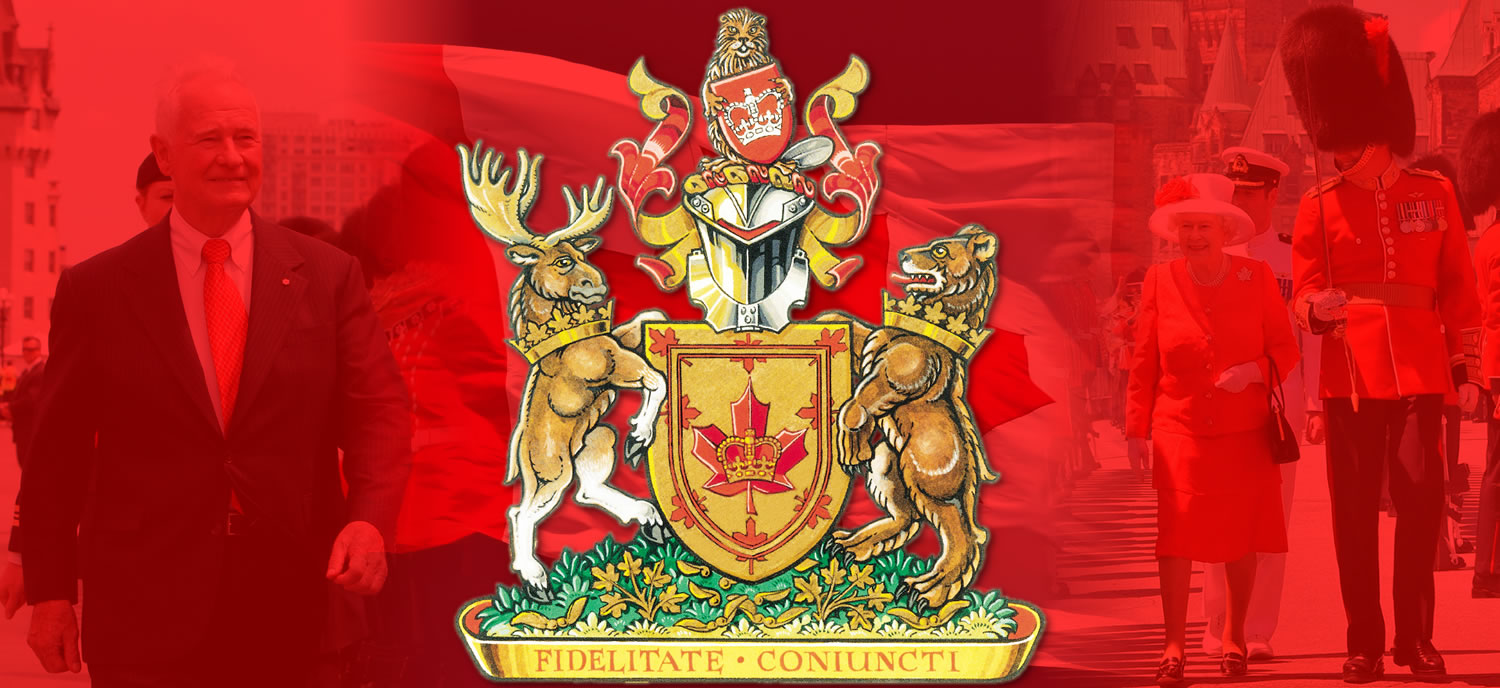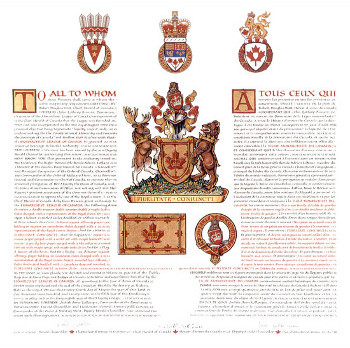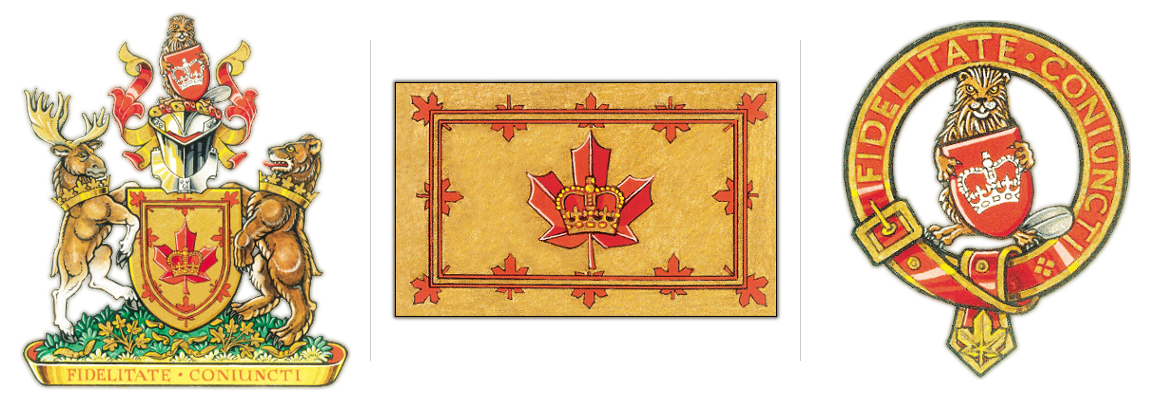History
A grant of Arms is an honour from the Crown and an exercise of the Royal Prerogative. In Canada, this is overseen by the Canadian Heraldic Authority, a part of the Office of the Governor General.
By petition to the Chief Herald of Canada on 31st March 1998, the Monarchist League of Canada expressed its desire to bear lawful Arms granted through the Authority. On 3rd June 1998, Chief Herald Robert Watt informed the League as follows: “The Deputy Herald Chancellor has issued a Warrant authorizing me to grant arms, crest, motto, supporters, a flag and a badge to the Monarchist League of Canada”.
The Dominion Chairman of the League subsequently requested that a number of members of the League with an expertise in heraldry develop ideas for the design of the Arms that might be presented in his discussions with the Chief Herald. This initiative produced a number of useful suggestions. He also invited all League members to consider an appropriate motto: many mottos were submitted in an informal competition, that chosen being the original idea of Garry Toffoli, “Loyalty Binds Us”, its rendering in Latin being “Fidelitate Coniuncti”.
The Arms were proclaimed by the Niagara Herald Extraordinary, R Gordon Macpherson, and presented to the League by Hilary M Weston, the Lieutenant Governor of Ontario, acting on behalf of the Governor General of Canada, at a ceremony in the course of a Choral Evensong of Thanksgiving for the 48th Anniversary of The Queen’s reign that was attended by over 600 League members and friends at The Cathedral Church of Saint James, Toronto, on Accession Day, Sunday, 6th February 2000. The Patent was subsequently dedicated by the Very Reverend Douglas Stoute, Dean of Toronto and Rector of the Cathedral.
The Full Coat of Arms
The full coat of arms, containing the Arms, Crest, Supporters, and Motto of the League.
The League Flag
The flag contains a banner of the shield of the Arms, as is traditional.
The League Badge
The badge, which provides an additional, alternative and less formal means of identifying the League, incorporates the crest of the Arms encircled by a ribbon bearing the motto, again as is traditional.
Notes on the grant of Arms to the Monarchist League of Canada
The use of the two Royal Crowns was approved personally by The Queen on the recommendation of the Governor General of Canada. The original design was signed by The Queen (“Approved Elizabeth R”) and remains in the Heraldic Authority Archives. However, a copy is available for inspection by interested League members. Permission to include the Crowns, an act of grace by the Sovereign, draws attention to the League’s particular mission, and recalls the fact that the sovereignty of Canada is vested in the Crown. To the best of our knowledge, this is the first grant of Arms wherein the Royal Crown has been approved for an entity other than a government body or an organization enjoying Royal patronage. It is also the first time in Canadian heraldry that Royal Crowns in two different colours have been included in a Patent.
The Crown and maple leaves on the shield represent both the purpose of the League and the entwining of Canada’s eleven governments possessing sovereign power with the monarchy. The maple leaf has been a Canadian symbol since it was proclaimed as such by King George V in 1921.
The moose and grizzly bear supporters are reminiscent of Canada’s unique fauna. They depict, respectively, a ubiquitous and well-loved denizen of the forests and woodlands whose range spreads across Canada, and a fierce beast who defends his territory against all comers. Therefore, they form an appropriate pairing for the League’s Arms, as they represent both the reach of its work throughout Canada as well as its vigilant, and occasionally aggressive, task of explaining and defending the role of the Canadian Crown.
The beaver on the crest of the Arms is an official Canadian symbol, designated as such by the rare passage of a private member’s bill introduced to the House of Commons by the late Sean O’Sullivan, who was a close friend and associate of the Dominion Chairman at the time of the League’s founding in 1970. Diligent and also territorial, the beaver gentles a shield of the Royal Crown in his paws, symbolizing the League’s affection for the monarchy coupled with its duty to serve and protect the institution. The silver and red of the shield reflect the national colours, also proclaimed in 1921 by King George V.
Maple saplings and seeds form the compartment at the base of the Arms, referencing the Maple Kingdom of Canada and the rich soil of dedication and toil from which the League sprung into existence and by which its corporate life continues to be nourished and renewed.
The motto, “Fidelitate Coniuncti”, stems from a suggestion by a long-time League member and officer, Garry Toffoli of Toronto, that “Loyalty Binds Us” would appropriately reflect both the work and fellowship of the League and the origins of Canadian unity under the Crown. To avoid the cumbersome design feature if the motto were to appear in both official languages, it was rendered in Latin, a language that has historically influenced both English and French, by Dr Ian McDonald of the University of Toronto, a consultant to the Canadian Heraldic Authority.



